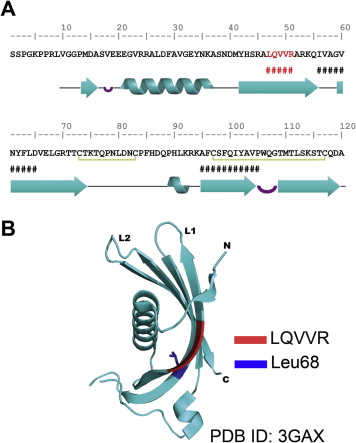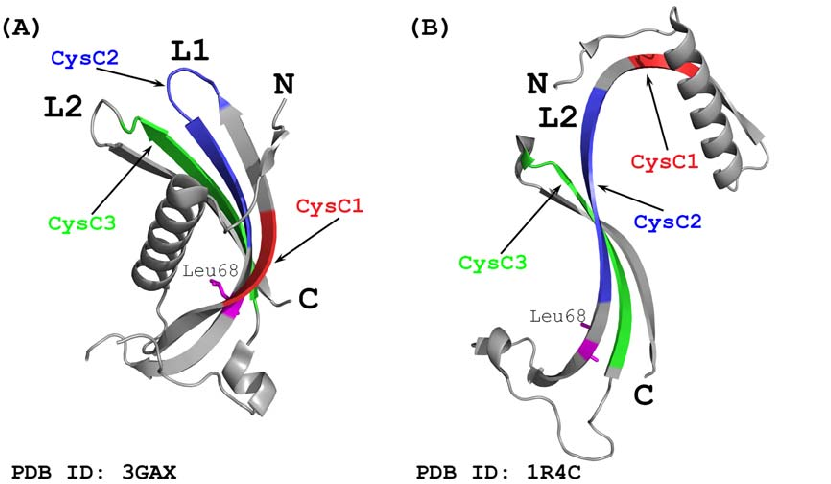Sandbox Reserved 1233
From Proteopedia
| (10 intermediate revisions not shown.) | |||
| Line 6: | Line 6: | ||
== Function == | == Function == | ||
| - | + | This protein is the most widely used biomarker of kidney function. If kidney function and glomerular filtration rate decline, the blood levels of cystatin C rise. Also, the serum levels of cystatin C are a more precise test of kidney function than serum creatinine levels. | |
== Disease == | == Disease == | ||
| + | |||
| + | Cystatin C is an endogenous cysteine proteinase inhibitor. It belongs to the type 2 cystatin superfamily. The diagnostic value of cystatin as a marker of kidney of dysfunction has been researched in a lot of clinical studies on adults, children and the elderly. | ||
| + | |||
| + | In most of these clinical studies, cystatin C is turned out to be a better diagnostic accuracy than serum creatinine in discriminating normal from impaired kidney function. So cystatin C is a key factor to see if we diagnosis kidney diseases. | ||
| + | |||
| + | Besides, it has been studied for its role in predicting new-onset or deteriorating cardiovascular disease. Furthermore, it is also turned out to play a key role in brain disorders involving in amyloid, for example,Alzheimer's disease. | ||
== Relevance == | == Relevance == | ||
| + | |||
| + | Cystatin C may be used as an alternative to creatinine and creatinine clearance to screen for and monitor kidney dysfunction in those with known or suspended kidney disease. It may be especially useful in the cases that creatinine test is not appropriate, for example, liver cirrhosis. Test the level of cystatin C is also useful in the early detection of kidney disease when other test results may still be normal and an affected may be few, look into more details. | ||
| + | |||
| + | Lots of scientists are in process of exploring other uses of cystatin C, for instance, use it alone normally or in combination with blood serum creatinine to estimate the glomerular filtration rate. A recent research found an equation for eGFR that includes both creatinine and cystatin C was more accurate than one that uses either one of them alone because it could be used to confirm chronic kidney disease in people with an eGFR near 60. | ||
== Structural highlights == | == Structural highlights == | ||
| Line 17: | Line 27: | ||
</StructureSection> | </StructureSection> | ||
| + | [[Image:cys2.jpg]][[Image:cys1.png]] | ||
| + | |||
== References == | == References == | ||
| - | + | Michael G. Shilpak et al (September 5, 2013). ''Cystatin C versus Creatinine in Determining Risk Based on Kidney Function.''10.1056/NEJMoa1214234 | |
| + | Retrieved from: http://www.nejm.org/doi/full/10.1056/nejmoa1214234#t=article | ||
| + | |||
| + | Lesley A. Inker et al (July 5, 2012). ''Estimating Glomerular Filtration Rate from Serum Creatinine and Cystatin C.'' 10. 1056/NEJMoa1114248 | ||
| + | Retrieved from: http://www.nejm.org/doi/full/10.1056/NEJMoa1114248#t=article | ||
Current revision
Cystatin c or cystatin 3 is a protein encoded by the CST3 gene, is mainly used as a biomarker of kidney function. Cystatin C is a protein that is produced by the cells in your body. When your kidneys are working well, they need to maintain a certain level of cystatin C your blood. It will need to be just right at that point. If the cystatin C level is too high, it might indicate that there might be some issues with the kidneys
An Introduction of Cystatin C
| |||||||||||
References
Michael G. Shilpak et al (September 5, 2013). Cystatin C versus Creatinine in Determining Risk Based on Kidney Function.10.1056/NEJMoa1214234 Retrieved from: http://www.nejm.org/doi/full/10.1056/nejmoa1214234#t=article
Lesley A. Inker et al (July 5, 2012). Estimating Glomerular Filtration Rate from Serum Creatinine and Cystatin C. 10. 1056/NEJMoa1114248 Retrieved from: http://www.nejm.org/doi/full/10.1056/NEJMoa1114248#t=article


